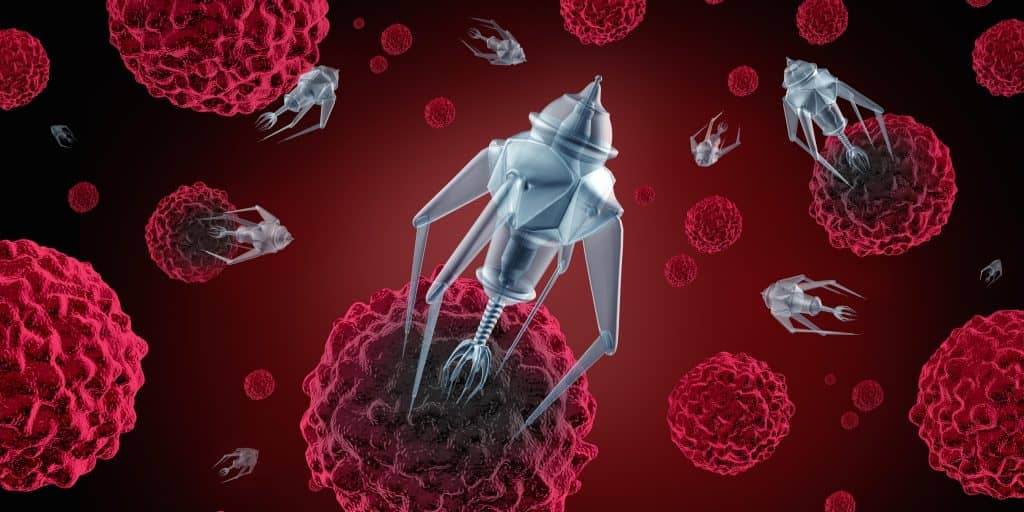Researchers in the field of nanomedicines have achieved a major breakthrough by developing tiny autonomous robots which can shrink the cancer tumors by cutting off their blood supply. The technique known as DNA origami is used by scientists from Arizona State University (ASU) and China’s National Center for Nanoscience and Technology (NCNST). They programmed the nanobots to carry payloads of a blood-clotting enzyme called thrombin to tumor-associated blood vessels in mice.
When the nanobots reach the surface of those blood vessels, they inject the thrombin in the heart of the tumor. According to the study, the nanobots blocked the tumor’s blood supply and caused damage to its tissue within 24 hours of treatment. After treatment was carried out for 2 days, the researchers witnessed the evidence of advanced thrombosis. Three days later, they saw that thrombi were present in all the tumor vessels.
These nanobots are far more targetted to attack the cancer tumors thanks to something called a DNA aptamer. This doesn’t work like chemotherapy which is more of a scorched-earth approach. The special payload on each bot’s surface makes it move towards a protein called nucleolin. This protein is generated in huge amounts only by the tumor endothelial cells. Since it is not found on the surface of healthy cells, the nanobots do not harm them in the process.
This is very important part of the experiment since if thrombin is delivered elsewhere in the body, it can prove to be highly dangerous. If it is released in the brain accidentally, it can cause a patient to have a stroke. The researchers have tested the nanobots in mice and Bama miniature pigs only. In both the cases, the bots proved to be safe and effective to shrink the tumors. Soon the researchers will look for clinical partners to help them take their technology further ahead. These nanobots can be used to target a variety of cancers and all of it can be done without causing any harm to the patient’s healthy cells.

